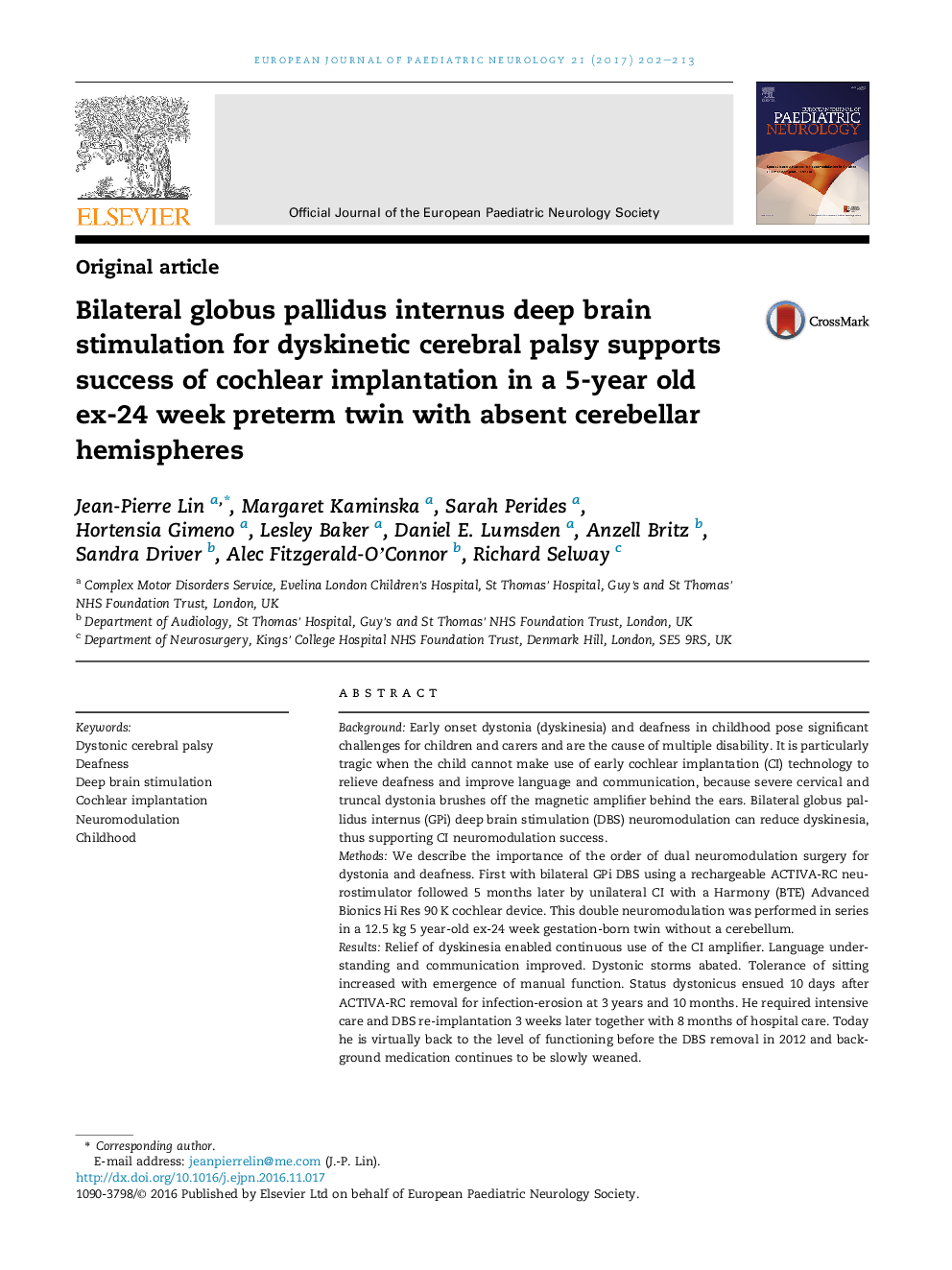| کد مقاله | کد نشریه | سال انتشار | مقاله انگلیسی | نسخه تمام متن |
|---|---|---|---|---|
| 5628931 | 1580002 | 2017 | 12 صفحه PDF | دانلود رایگان |
- This is the first description of a rechargeable neurostimulator for deep brain stimulation (DBS) implantation implanted in a 5-year old ex-24 week preterm boy to relieve dystonic-choreoathetosis allowing subsequent cochlear implantation (CI) 5 months later.
- The technical challenges of dual DBS and CI are described.
- The benefits of DBS in reducing dystonia storms are described.
- The benefits of dual DBS and CI for hearing and language are described.
BackgroundEarly onset dystonia (dyskinesia) and deafness in childhood pose significant challenges for children and carers and are the cause of multiple disability. It is particularly tragic when the child cannot make use of early cochlear implantation (CI) technology to relieve deafness and improve language and communication, because severe cervical and truncal dystonia brushes off the magnetic amplifier behind the ears. Bilateral globus pallidus internus (GPi) deep brain stimulation (DBS) neuromodulation can reduce dyskinesia, thus supporting CI neuromodulation success.MethodsWe describe the importance of the order of dual neuromodulation surgery for dystonia and deafness. First with bilateral GPi DBS using a rechargeable ACTIVA-RC neurostimulator followed 5 months later by unilateral CI with a Harmony (BTE) Advanced Bionics Hi Res 90Â K cochlear device. This double neuromodulation was performed in series in a 12.5Â kg 5 year-old ex-24 week gestation-born twin without a cerebellum.ResultsRelief of dyskinesia enabled continuous use of the CI amplifier. Language understanding and communication improved. Dystonic storms abated. Tolerance of sitting increased with emergence of manual function. Status dystonicus ensued 10 days after ACTIVA-RC removal for infection-erosion at 3 years and 10 months. He required intensive care and DBS re-implantation 3 weeks later together with 8 months of hospital care. Today he is virtually back to the level of functioning before the DBS removal in 2012 and background medication continues to be slowly weaned.ConclusionThis case illustrates that early neuromodulation with DBS for dystonic cerebral palsy followed by CI for deafness is beneficial. Both should be considered early i.e. under the age of five years. The DBS should precede the CI to maximise dystonia reduction and thus benefits from CI. This requires close working between the paediatric DBS and CI services.
Journal: European Journal of Paediatric Neurology - Volume 21, Issue 1, January 2017, Pages 202-213
